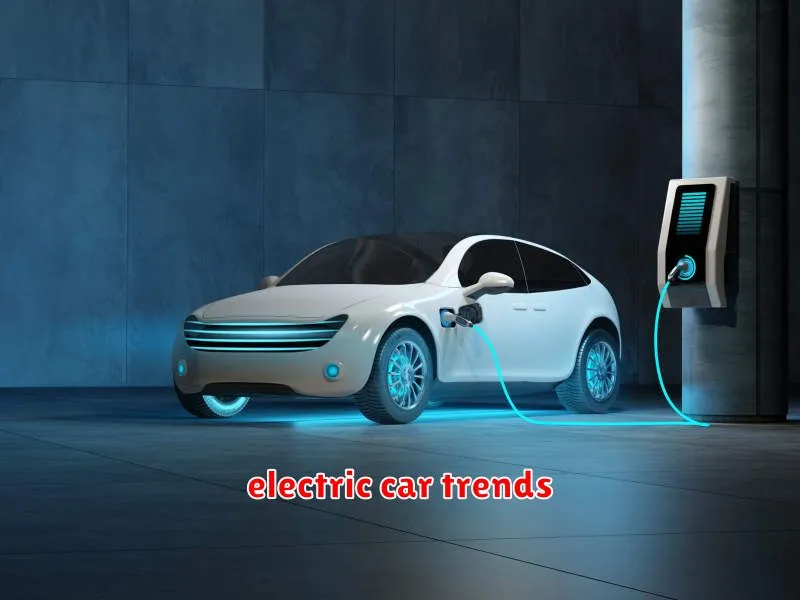The automotive industry is experiencing a seismic shift, with the rapid rise of electric vehicles (EVs) rewriting the rules of the road. Gone are the days of gas-guzzling engines and tailpipe emissions; the future is electric, and it’s arriving faster than many anticipated. This revolution is fueled by a potent cocktail of factors, ranging from environmental concerns and government incentives to technological advancements and shifting consumer preferences. This article delves into the key drivers propelling the exponential growth of the EV market, exploring the factors that are shaping the landscape of transportation for generations to come.
The demand for EVs is booming, driven by a confluence of factors that are creating a perfect storm for the electric revolution. Sustainability is at the forefront, as consumers and governments alike seek to reduce carbon emissions and combat climate change. Government incentives, such as tax breaks and subsidies, are playing a crucial role in making EVs more affordable and accessible. Moreover, rapid technological advancements are leading to improved battery range, faster charging times, and more affordable EVs, further accelerating adoption. Consumer preferences are also shifting, with younger generations increasingly drawn to the eco-friendliness, performance, and connected features offered by EVs.
The Rise of Electric Vehicles: A Global Perspective
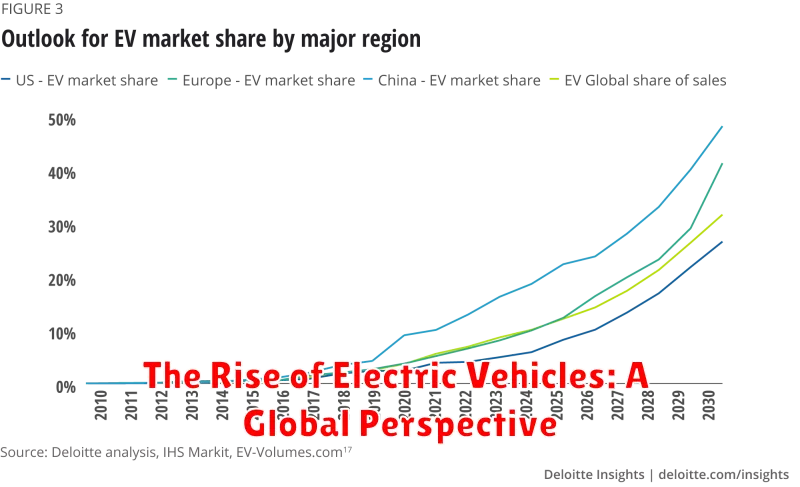
The global automotive landscape is undergoing a dramatic transformation, with electric vehicles (EVs) rapidly gaining traction worldwide. This shift is driven by a confluence of factors, including environmental concerns, government incentives, and technological advancements. As the world grapples with climate change and the need for sustainable transportation, EVs are emerging as a key solution.
The growth of the EV market is evident in the increasing sales figures and the expansion of EV models across various segments. From luxury sedans to compact city cars, manufacturers are investing heavily in EV development to cater to diverse consumer needs. The rising awareness of climate change and the associated health risks of fossil fuel emissions have spurred consumer demand for EVs.
Governments around the globe are playing a pivotal role in accelerating EV adoption through tax incentives, subsidies, and the establishment of charging infrastructure. These measures aim to make EVs more affordable and accessible to a wider audience. Moreover, technological advancements are continuously enhancing the range, performance, and affordability of EVs, further driving market growth.
While the adoption of EVs is accelerating, there are still challenges to overcome. Range anxiety remains a concern for some consumers, and the development of a robust charging network is crucial for widespread EV adoption. Additionally, the cost of EVs compared to traditional gasoline-powered vehicles can be a barrier for some. Nevertheless, the long-term benefits of EVs, including reduced emissions, improved air quality, and energy independence, are undeniable.
The rise of electric vehicles marks a significant step towards a cleaner, more sustainable future. As technology continues to evolve and government policies support EV adoption, the electric revolution is poised to reshape the automotive industry and the world at large.
Environmental Concerns and the Shift Towards Sustainable Transportation
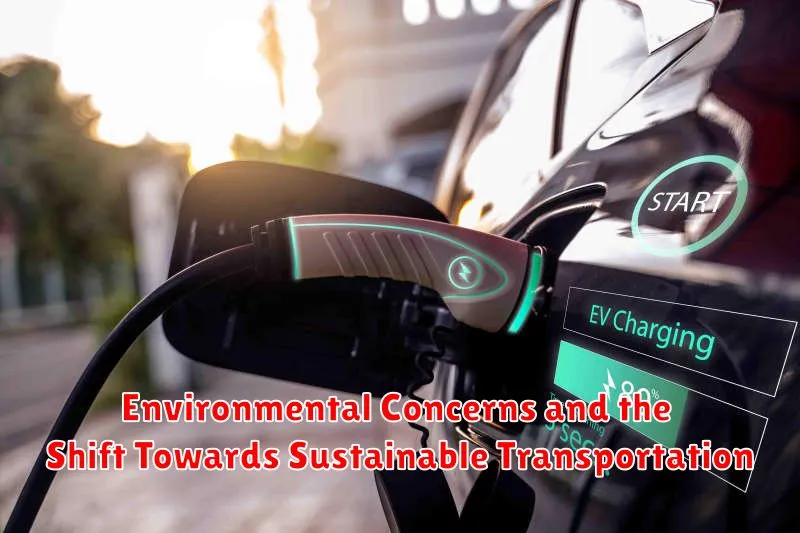
The escalating global environmental crisis has become a pressing concern, with climate change at the forefront. Fossil fuel-powered vehicles are a major contributor to greenhouse gas emissions, accelerating climate change and its devastating impacts. The urgent need to mitigate these environmental consequences has driven a global shift towards sustainable transportation options, with electric vehicles (EVs) emerging as a frontrunner.
The growing awareness of the detrimental effects of traditional transportation on air quality and public health is another crucial factor driving the transition to EVs. Cities around the world grapple with severe air pollution, leading to respiratory illnesses and other health issues. EVs, with their zero-emission operation, offer a clean and sustainable alternative, significantly improving air quality and public well-being.
In addition to environmental concerns, government policies and incentives are playing a pivotal role in promoting the adoption of EVs. Many governments worldwide have implemented tax breaks, subsidies, and infrastructure development programs to encourage EV ownership and stimulate the market. These policies create a favorable environment for EV adoption, making them more accessible and affordable to a broader audience.
The rising cost of fossil fuels is further propelling the transition to EVs. Fuel prices fluctuate significantly, adding to the cost of driving traditional vehicles. In contrast, EVs offer a more stable and often cheaper mode of transportation due to the lower operating costs associated with electricity. This economic advantage makes EVs increasingly attractive, particularly for individuals seeking to reduce their transportation expenses.
Government Incentives and Policies Promoting EV Adoption
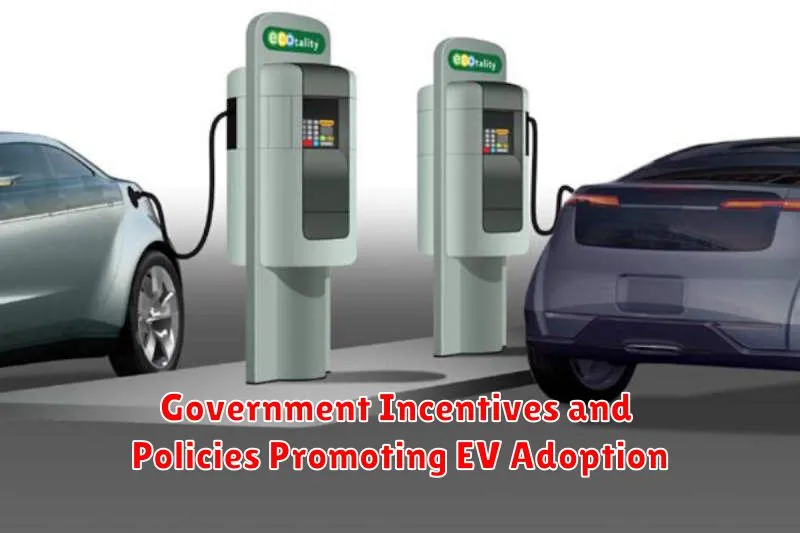
Governments around the world are playing a crucial role in accelerating the adoption of electric vehicles (EVs) through a variety of incentives and policies. These measures aim to address the higher initial cost of EVs, encourage consumer demand, and support the development of charging infrastructure.
Financial Incentives: Governments offer direct financial assistance to EV buyers in the form of tax credits, rebates, and subsidies. These incentives reduce the upfront cost of purchasing an EV, making them more attractive to consumers. For example, the United States offers a federal tax credit of up to $7,500 for eligible EV purchases.
Charging Infrastructure Development: Governments are investing heavily in building out charging infrastructure, which is essential for EV adoption. This includes installing public charging stations, providing grants for businesses to install charging stations, and promoting the adoption of home charging solutions.
Fleet Electrification: Governments are setting targets and implementing policies to encourage the electrification of public and private fleets. This includes requiring government agencies to transition to EVs, providing incentives for businesses to electrify their fleets, and setting emission standards for commercial vehicles.
Research and Development: Governments are also investing in research and development to advance EV technology, improve battery performance, and reduce the cost of production. These investments help to create a more competitive and sustainable EV market.
These government incentives and policies are playing a significant role in driving the exponential growth of the EV market. By addressing key barriers to EV adoption, governments are paving the way for a cleaner, more sustainable transportation future.
Advancements in Battery Technology and Range Extension
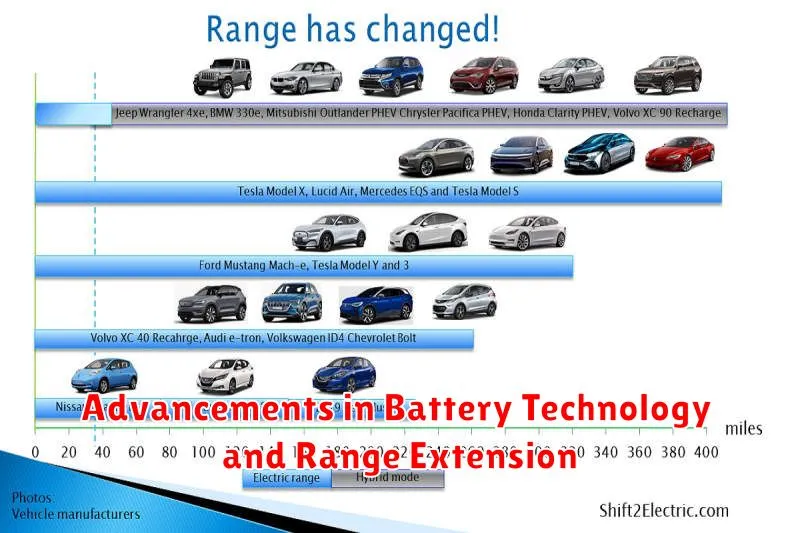
The electric revolution is driven by several key factors, and among them, advancements in battery technology and range extension play a pivotal role. As battery technology advances, electric vehicles (EVs) are achieving longer ranges, faster charging times, and improved performance, making them increasingly appealing to consumers.
One significant development is the increased energy density of batteries. This translates to greater storage capacity within the same physical space, allowing EVs to travel farther on a single charge. Lithium-ion batteries, the current standard, are continuously evolving, with researchers exploring alternative chemistries like solid-state batteries that promise even higher energy density and improved safety.
Moreover, charging infrastructure is rapidly expanding. Faster charging technologies like DC fast charging enable EV owners to top up their batteries in a fraction of the time, addressing range anxiety concerns. The increasing availability of public charging stations further supports the adoption of EVs, making them more practical for daily commutes and longer journeys.
Range extension technologies like range extenders and plug-in hybrids provide additional flexibility. Range extenders, typically small gasoline engines, can generate electricity when the battery is depleted, extending the vehicle’s range. Plug-in hybrids offer the best of both worlds, allowing for electric-only driving for shorter trips and the option to use the gasoline engine for longer distances.
As battery technology and range extension strategies continue to advance, the electric vehicle market is poised for exponential growth. The combination of longer range, faster charging, and greater convenience is making EVs a more viable and attractive alternative to traditional gasoline-powered vehicles.
Declining Battery Costs Making EVs More Affordable
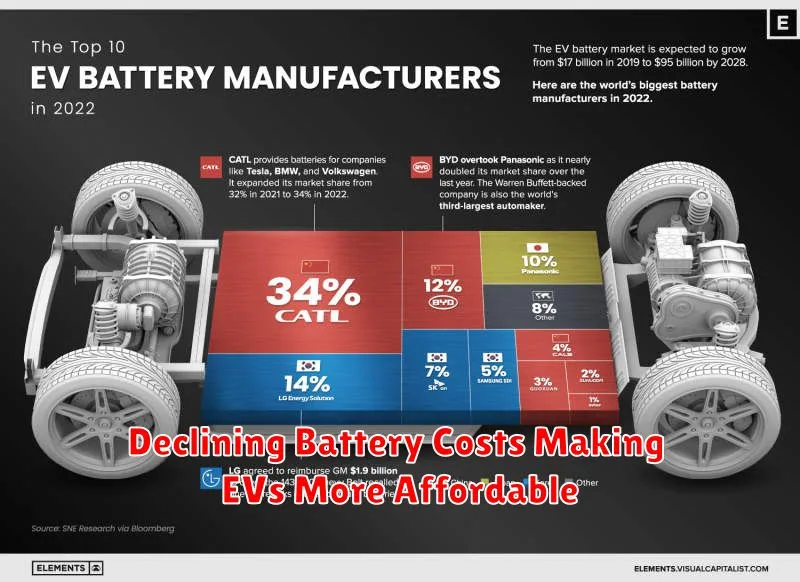
One of the key factors driving the exponential growth of the electric vehicle market is the rapid decline in battery costs. Lithium-ion batteries, the most commonly used type in EVs, have seen a significant price reduction over the past decade. This decline in cost has made EVs more affordable, making them increasingly competitive with gasoline-powered cars.
The cost of batteries has been a major obstacle to widespread EV adoption. Battery costs accounted for a large portion of the total cost of an EV, making them significantly more expensive than their gasoline-powered counterparts. However, with advancements in battery technology and economies of scale in production, the cost of batteries has dropped dramatically.
This cost reduction has had a profound impact on the EV market. It has made EVs more accessible to a wider range of consumers, driving increased demand and accelerating the transition to a cleaner, more sustainable transportation system. The affordability of EVs is expected to continue to improve as battery technology advances and production scales up, paving the way for a future where electric vehicles become the dominant form of transportation.
Growing Consumer Demand and Changing Preferences
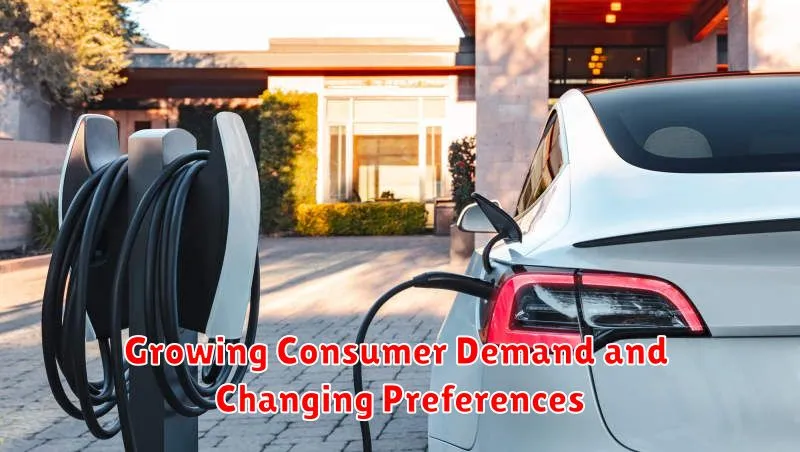
The electric vehicle (EV) market is experiencing an unprecedented boom, driven by a confluence of factors, including growing consumer demand and shifting preferences. Consumers are increasingly drawn to EVs for their environmental benefits, lower running costs, and the perception of being a more technologically advanced and modern form of transportation. The rising awareness of climate change and the desire to reduce carbon footprints have made sustainability a key purchasing factor for many.
Furthermore, EVs offer significant cost savings over traditional gasoline vehicles, particularly in the long run. Lower fuel and maintenance costs contribute to a more affordable ownership experience. Coupled with government incentives and subsidies, EVs are becoming increasingly accessible to a wider range of consumers.
Beyond environmental and economic considerations, changing consumer preferences are also driving EV adoption. Younger generations, in particular, prioritize technology, innovation, and a connected driving experience. EVs are perceived as stylish, cool, and advanced, appealing to this demographic. The growing trend of urbanization and limited parking spaces also contributes to the appeal of compact, maneuverable EVs.
The automotive industry is responding to this growing demand by introducing a diverse range of EVs, from affordable city cars to luxury SUVs. The availability of a wider range of models caters to a more diverse set of consumer needs and preferences, further propelling the EV market forward.
Expansion of Charging Infrastructure and Networks

The rapid adoption of electric vehicles (EVs) is contingent upon the availability of a robust and convenient charging infrastructure. The expansion of charging networks is a crucial factor driving the growth of the EV market. As more EVs hit the road, the need for charging stations is escalating, leading to a significant increase in the number of public and private charging networks.
Public charging stations are becoming increasingly common in urban areas, shopping malls, and along highways. These stations offer a convenient way for EV owners to charge their vehicles while running errands or traveling long distances. Private charging networks are also gaining traction, with businesses and homeowners installing charging stations for their own use. This growing network of chargers provides EV owners with peace of mind and reduces range anxiety.
The development of fast-charging technology is also playing a significant role in the expansion of charging infrastructure. These chargers can replenish a substantial amount of battery capacity in a relatively short period, making long-distance travel in EVs more feasible. This technological advancement is critical for overcoming the range limitations of EVs, attracting a wider range of consumers to the EV market.
The expansion of charging infrastructure is not limited to the development of new charging stations. Smart charging technologies are also emerging, allowing for the optimization of energy consumption and grid management. These technologies can help to balance the load on the grid by charging EVs during off-peak hours, reducing the strain on power systems. This efficiency is a significant benefit for both EV owners and the power grid.
In conclusion, the expansion of charging infrastructure and networks is a critical driver of EV market growth. As charging becomes more convenient, accessible, and efficient, EV adoption will continue to accelerate. The development of fast-charging technology, the proliferation of charging networks, and the integration of smart charging technologies are all contributing to a more EV-friendly landscape, paving the way for a future powered by electricity.
Investments and Innovations by Automotive Manufacturers
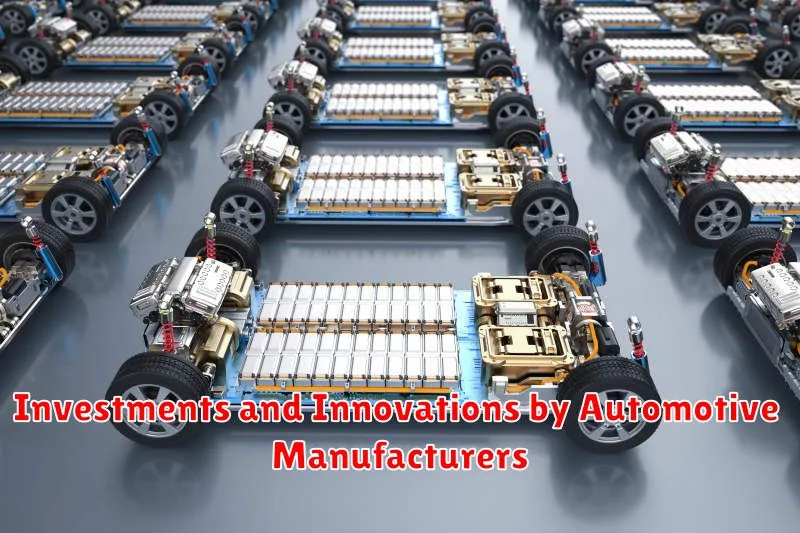
The electric vehicle (EV) market is experiencing explosive growth, driven by a confluence of factors including environmental concerns, government incentives, and technological advancements. A key driver of this growth is the strategic investments and innovations by automotive manufacturers. These companies are rapidly evolving their product portfolios, manufacturing processes, and business models to meet the increasing demand for EVs.
Investment in EV Research and Development (R&D): Automotive manufacturers are pouring resources into R&D to develop cutting-edge EV technologies. This includes advancements in battery technology, electric motors, and charging infrastructure. The focus is on improving battery range, reducing charging times, and enhancing overall EV performance.
Expansion of EV Production Capacity: Recognizing the growing market, manufacturers are expanding their EV production capacity. This involves building new factories, upgrading existing facilities, and establishing strategic partnerships to ensure they can meet the rising demand. The shift towards EV production is also leading to the development of new supply chains for key EV components, such as batteries and electric motors.
Introduction of New EV Models: Traditional automotive giants like Volkswagen, General Motors, and Ford are introducing a wide range of new EV models, targeting different segments of the market. From compact city cars to luxurious SUVs, the diversity of EV offerings is growing rapidly, providing consumers with greater choice and options.
Collaboration and Partnerships: Partnerships between automotive manufacturers and technology companies are becoming increasingly common in the EV sector. These collaborations focus on areas such as battery technology, software development, and autonomous driving systems. By leveraging each other’s strengths, manufacturers are accelerating the development and adoption of EV technology.
The investments and innovations by automotive manufacturers are not only fueling the growth of the EV market but also shaping the future of transportation. As these companies continue to refine their EV technologies and expand their production capacity, the adoption of electric vehicles is set to accelerate, driving a significant shift towards a cleaner and more sustainable future.
The Role of Ride-Hailing and Shared Mobility Services

The electric vehicle (EV) market is experiencing exponential growth, driven by a confluence of factors, including technological advancements, environmental concerns, and government incentives. Among these drivers, the role of ride-hailing and shared mobility services is particularly noteworthy. These services are accelerating the transition to EVs by providing a platform for widespread adoption and promoting their benefits to a broader audience.
Ride-hailing companies, such as Uber and Lyft, are increasingly incorporating EVs into their fleets. This move is driven by several factors, including the cost savings associated with lower fuel and maintenance costs, as well as the appeal of offering a more sustainable and environmentally friendly service. By making EVs readily available to a large number of consumers, ride-hailing companies are helping to normalize their use and expose people to the benefits of electric mobility.
Shared mobility services, such as car-sharing and bike-sharing programs, are also contributing to the growth of the EV market. These services provide users with convenient and affordable access to electric vehicles, without the commitment of ownership. This allows individuals to experience the benefits of electric mobility without the financial barriers associated with purchasing an EV.
The integration of EVs into ride-hailing and shared mobility services is creating a virtuous cycle, driving further adoption and innovation. As more EVs are deployed in these services, economies of scale are realized, leading to lower costs and increased availability. This, in turn, stimulates demand from individual consumers, further propelling the growth of the EV market.
In conclusion, ride-hailing and shared mobility services play a pivotal role in accelerating the electric vehicle revolution. By making EVs accessible and convenient for a broad range of consumers, these services are driving adoption, reducing barriers to entry, and promoting the environmental benefits of electric mobility.
Future Projections for the Electric Vehicle Market

The electric vehicle (EV) market is experiencing an unprecedented surge, driven by a confluence of factors like technological advancements, environmental concerns, and government incentives. This exponential growth is poised to continue, with analysts predicting a transformative future for the automotive industry.
Forecasts suggest that the global EV market will witness a significant expansion in the coming years. According to BloombergNEF, global EV sales are projected to reach 31 million units by 2030, accounting for 31% of all new car sales. This signifies a remarkable shift towards electrification, with internal combustion engine (ICE) vehicles gradually losing ground.
The growth trajectory is fueled by several key factors. First, rapid technological advancements are driving down EV production costs, making them more accessible to a broader market. Second, increasing environmental regulations and consumer awareness of climate change are pushing the adoption of cleaner transportation solutions. Third, government incentives, such as tax credits and subsidies, are further incentivizing EV purchase.
The future EV landscape will also be shaped by the emergence of new players and technologies. The rise of battery swapping and shared mobility platforms will offer alternative ownership models and enhance convenience for consumers. Furthermore, autonomous driving technologies are expected to integrate with EVs, creating a new era of intelligent and connected vehicles.
While the future holds immense potential for the EV market, several challenges remain. Limited charging infrastructure, battery range anxiety, and high initial costs are some of the obstacles that need to be addressed for widespread adoption. Nevertheless, with continued innovation and supportive policies, the EV market is on track to revolutionize the automotive industry and create a sustainable future for transportation.

